Partial funding has been announced for the mixed-use development at 4630 S Ashland Avenue in Back of the Yards. Located on the intersection with W 47th Street and S McDowell Avenue, the project will replace a group of multi-story structures behind a single facade. Dubbed ‘Rooted and Rising’, the proposal is being led by the Back of the Yards Neighborhood Council and Park Row Development.

Renderings for Rooted and Rising by JGMA
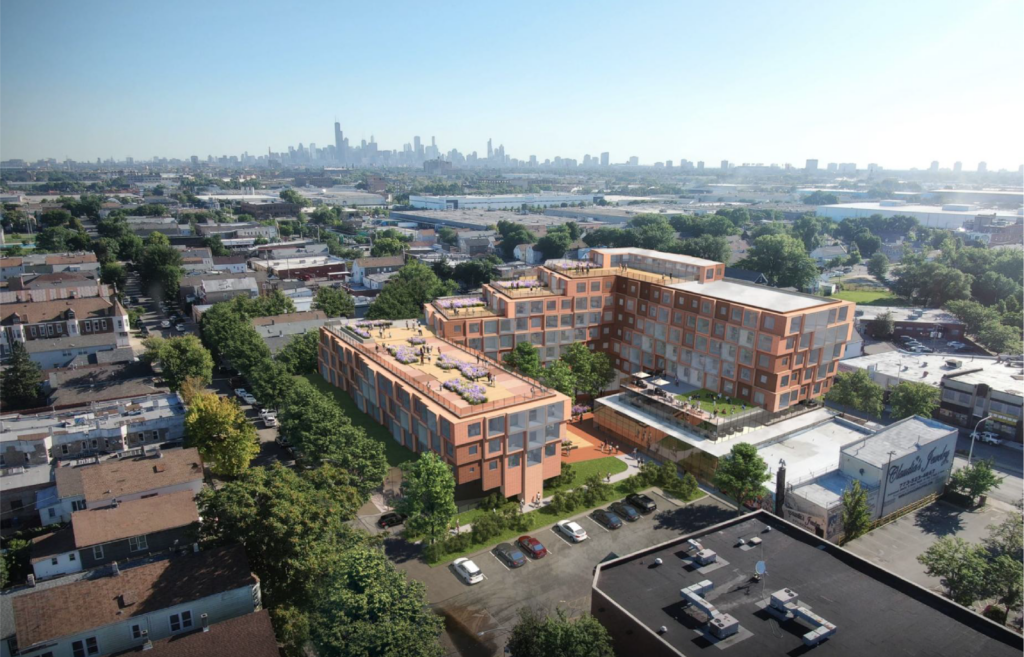
Renderings for Rooted and Rising by JGMA
Rising seven stories and nearly 80 feet in height, the U-shaped structure features a bold staggered exterior designed by local firm JGMA who has worked on other similar projects. Now the development has received $500,000 from the We Rise Together grant, building upon a partial grant it received from the Pritzker Traubert Foundation Chicago prize in 2022.

Renderings for Rooted and Rising by JGMA
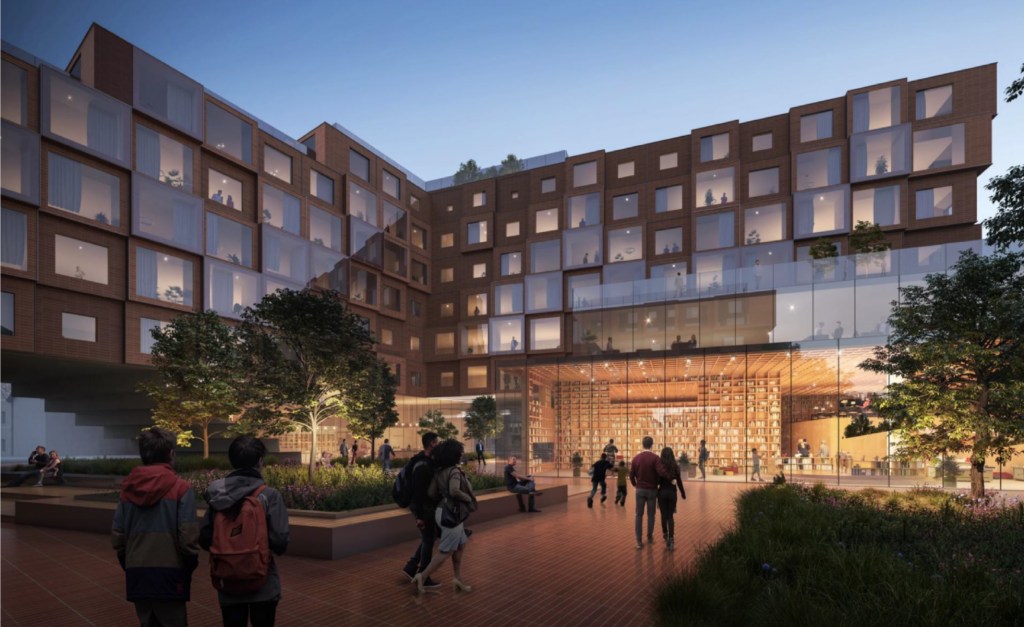
Renderings for Rooted and Rising by JGMA
Now additional renderings have been revealed as the developers continue to push the project though its cost has increased slightly. The large ground floor will feature a full glass facade with a multi-level interior boasting a new location of the Chicago Public Library, the wood-clad branch will include study rooms and other programming around a large cut-through to the inner courtyard.
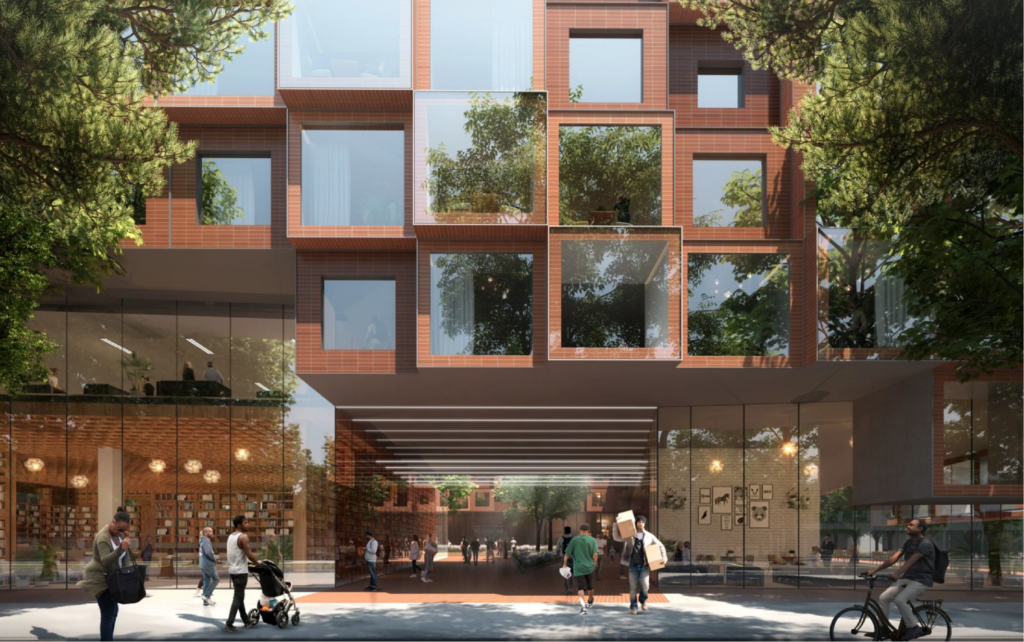
Renderings for Rooted and Rising by JGMA
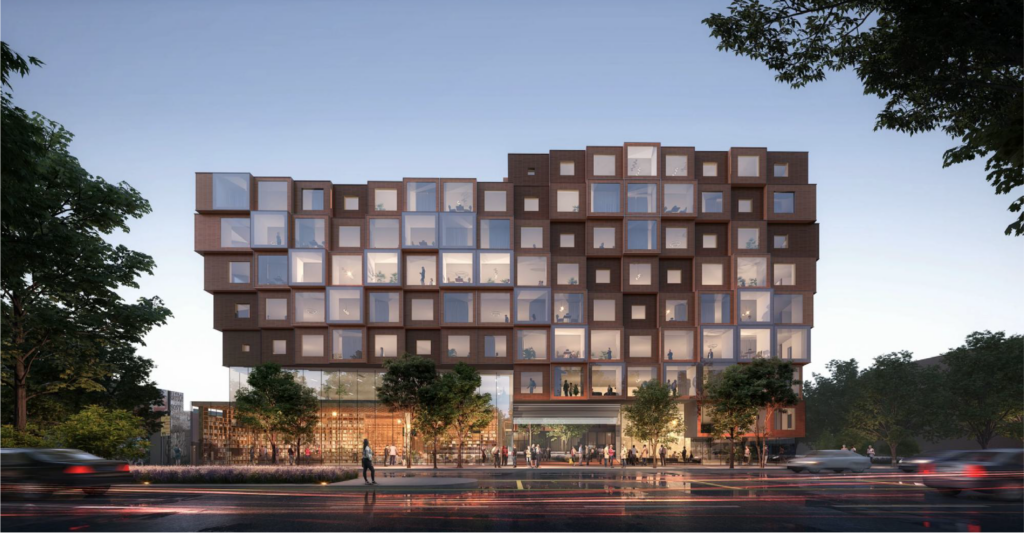
Renderings for Rooted and Rising by JGMA
This will be joined by a health center, retail space, a performing arts center, and multiple community-based service providers. The public will be able to utilize plenty of outdoor space around the base of the structure, with landscaped zones and additional seating. The floors above will contain 99 residential units, all of which will be affordable, and aimed at families and individuals.
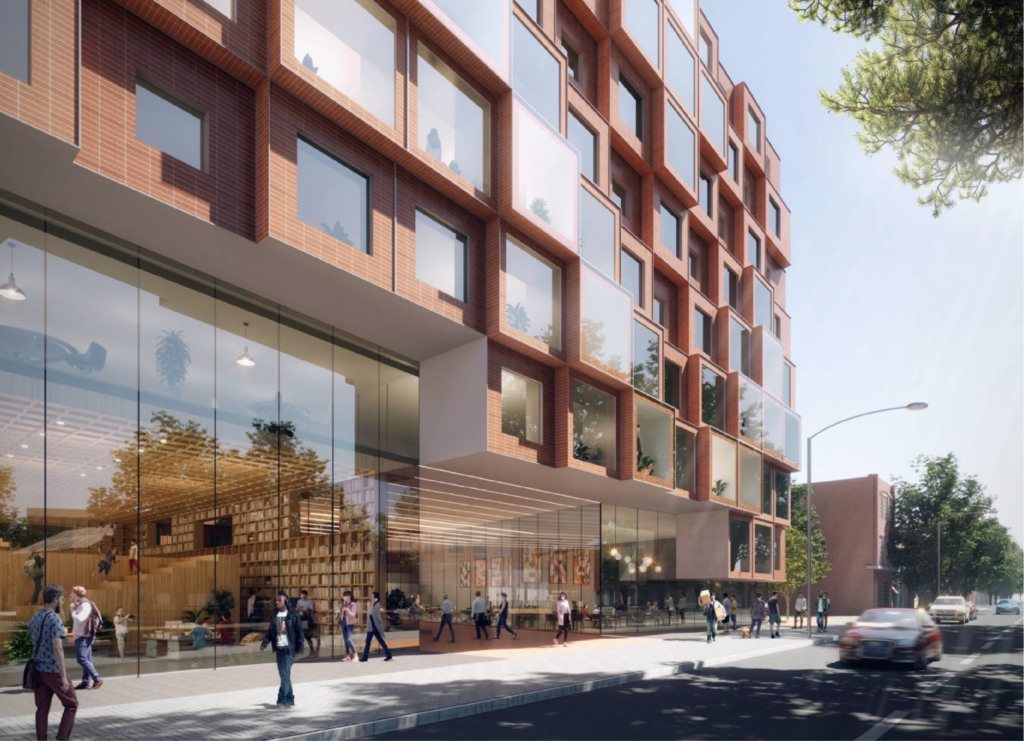
Renderings for Rooted and Rising by JGMA
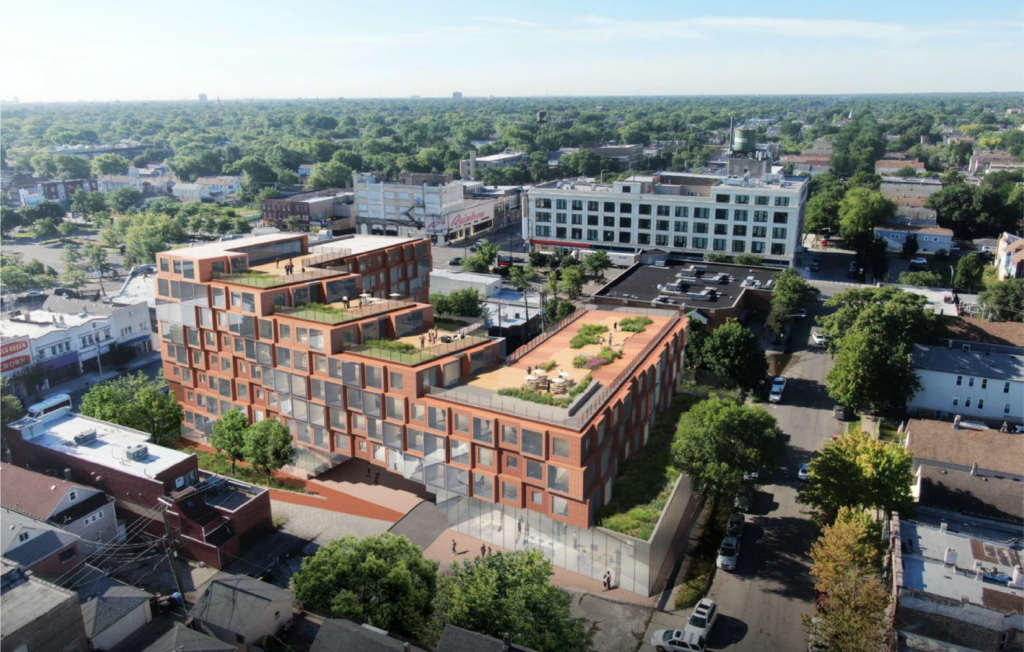
Renderings for Rooted and Rising by JGMA
Residents will have access to multiple rooftop outdoor terraces as the structure steps up to meet the street corner towards United Yards, a multi-phase affordable development currently going up. The exterior will be clad in a thin red brick exterior with windows of different sizes to create a dynamic facade.
The development is now set to cost $69 million, up from the $61 million announced in 2022. Currently a timeline is unknown after it did not meet the original spring 2023 groundbreaking.
Subscribe to YIMBY’s daily e-mail
Follow YIMBYgram for real-time photo updates
Like YIMBY on Facebook
Follow YIMBY’s Twitter for the latest in YIMBYnews

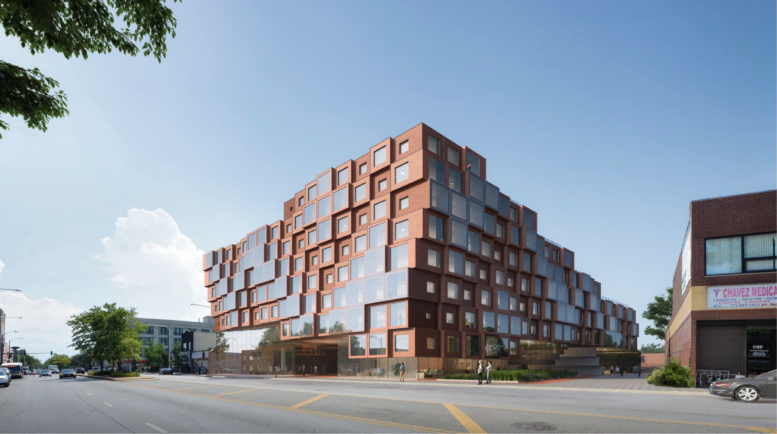
A striking design. However, in what universe could this be considered “affordable housing”. Affordable to whom?
The current projected costs are $69 for 99 units, working out at ~700k a unit. For a contemporary comparison, The Elizabeth, certainly no slum development, has a budget of $110 for 350 units, working out at ~300 k a unit. Certainly average unit size may vary, but I doubt this can justify the enormous cost difference for the two developments. Where on earth is the extra money going. Perhaps it would be better for “affordable housing” advocates to buy “off the peg” from commercial developers.
Even the previous post for 5214 N Lincoln Ave describes a market rate building providing 42 units for a cost of $7m. A mere ~170 k per unit. Is the answer that “if it’s not my money then why should I care”? And don’t get me stated on the CTA’s, no doubt gold plated, new station at Damen.
Seprin,
You sound like a bean counter on ateroids.You can’t accept that folks that are not rich should have affordable housing. You distort the numbers by ignoring the fact that the costs also include a planned PUBLIC library, small medical center, retail space, performing arts space and offices for community service providers. In your world only a
certain class of people deserve quality housing and services.
You continue with classist nonsense, spouting of about a “gold plated” new CTA station on Damen.
Not at all. The point is that perfectly acceptable housing can be built for the non-poor at half the cost or less of so called affordable housing. Someone is making a fast buck out of this.
This development will be so incredibly transformative for the neighborhood. Excited to see it
One hundred years ago housing for the poor meant an entire family in one room sleeping on sacks filled with insect-ridden rags (George Orwell, 1937, The Road to Wigan Pier). The reason ‘affordable housing’ is today so expensive is that it provides extravagant luxuries even Renaissance kings did not enjoy, such as insulation, electricity, HVAC and indoor plumbing. That’s why a ‘minimal’ home costs $300K.
If we were willing to build one-room boxes with a light bulb in the ceiling, a single window in the wall, a pellet stove in the middle, and sleeping sacks on the floor (clean sacks, mind you) these dwellings would cost very little, meaning we could make them abundantly for all those in that price range. This is essentially the layout of a Celtic hut, Mongolian yurt, Native American wigwam, Inuit igloo, etc. which have for centuries been the typical human dwellings.
But because we’re not willing to build a massive ark of 30K boxes (lest we be called inhumane) we build instead a narrow raft of 300K boxes, each with dozens of electrical outlets and separate bedrooms for each child. We call ourselves virtuous, yet we’ve sheltered only that smaller fraction of persons with the means to live better than ancient royalty. And then we’re surprised that there isn’t enough low-income housing.
I think the debate is not weather affordable housing needs to be build cheaply as much as it is about why so many affordable units are so much more costly to construct than even luxury market-rate units.
Affordable housing is very complicated to develop, requiring numerous funding sources with numerous requirements each. I think the question needs to be more about how to reduce the costs involved in developing affordable housing, rather than focusing on one developer.